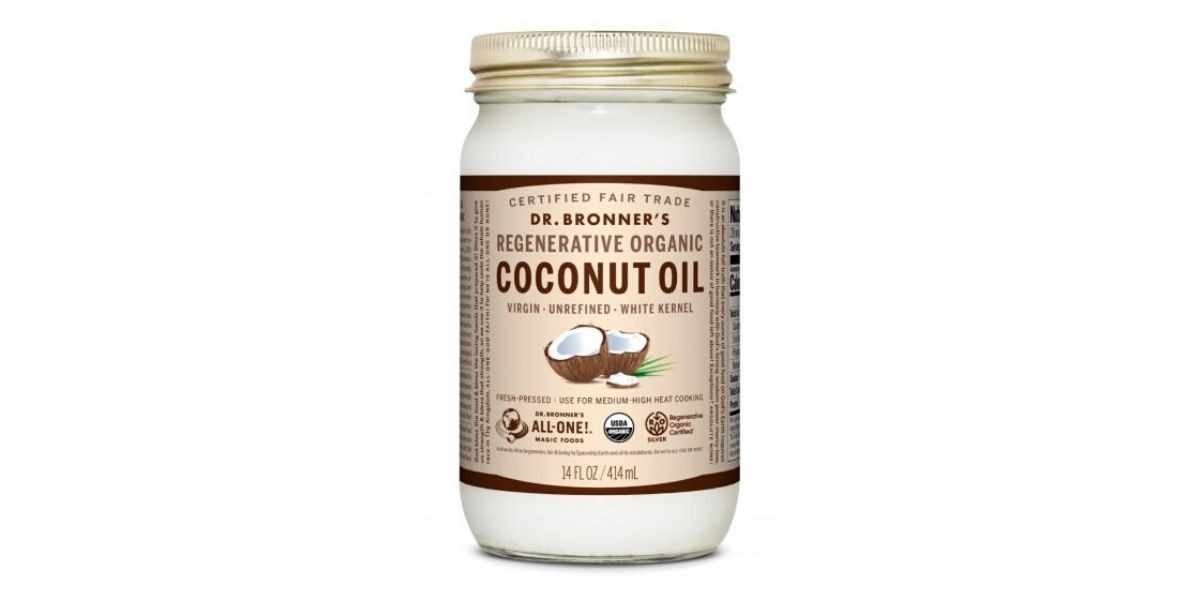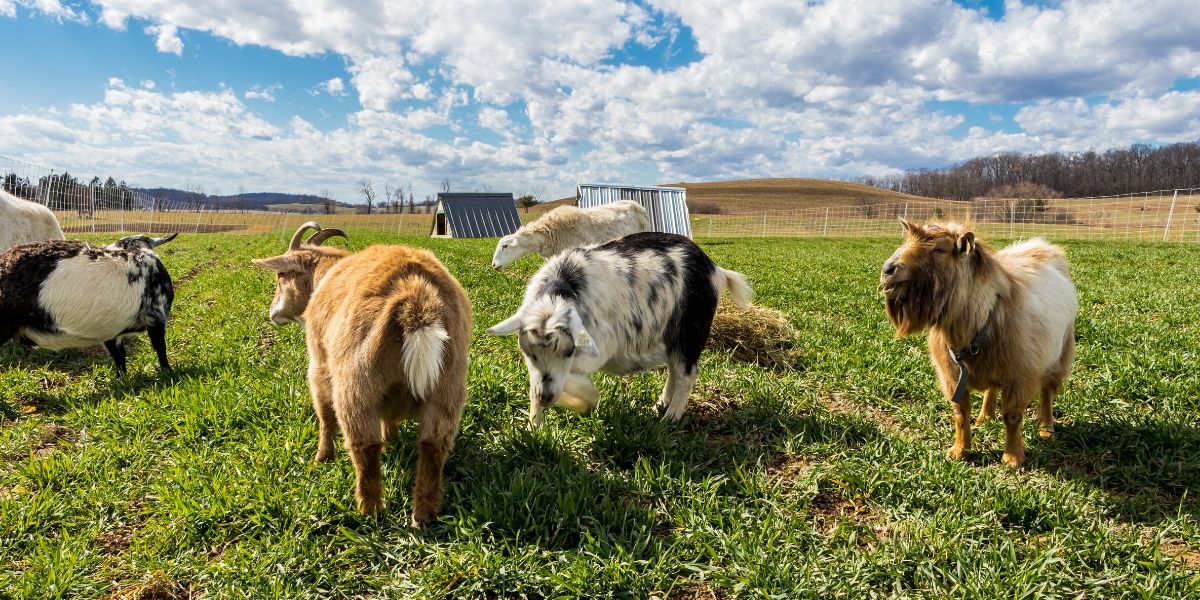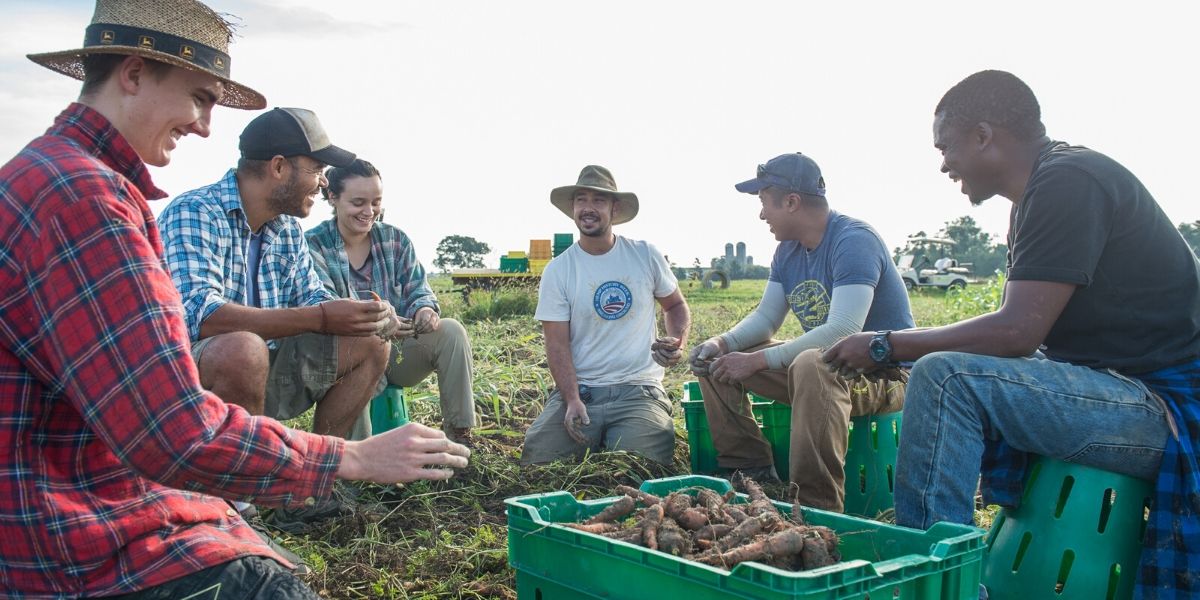You probably already eat organic when you can, and if you’re like me and still eat meat and poultry, you buy grass-fed and pasture-raised whenever possible. Which is great! Local and organic is always a good choice. But if you’ve ever wondered if the food we eat can not only be more nutritious but also better for the planet, enter Regenerative Organic Certified products.
Regenerative organic certified products
The Rodale Institute has long been considered a leader in organic farming. But after years of working with farmers on organic practices, they decided to take it one step further. So the Rodale Institute partnered with brands like Patagonia and Dr. Bronner’s to create a certification program for products that have been grown using regenerative practices. These are a few of the first certified regenerative products to roll out.
Patagonia Provisions: Chili Mango
These disappeared fast in my house! I love mangoes and chili, so this was a perfect combination. Not too spicy, but a little bit of kick. I was afraid I’d eat the whole bag in one day, but my 10-year-old son polished them off for me.

Patagonia Provisions: Cacao + mango bars
Another addictive combination here – mangoes and cacao nibs. The soft sweetness of mangoes and bananas combined with the crunch from cacao nibs and almonds! Yum.

Dr. Bronner’s Certified Organic Coconut Oil
OK, I haven’t tried this one yet. But soon! And when I do I’ll update this. Dr. Bronner’s has long been a leader in the movement toward sustainable living, and it’s nice to see their commitment to regenerative agriculture!

Why regenerative agriculture is essential for the environment
To learn more about the Regenerative Organic Certification program, I had the opportunity to ask Margaret Wilson, the Media Relations Specialist at the Rodale Institute, a few questions. She was kind enough to answer them all in such details that I’m including the Q&A below. If you’re not already a super-fan of regenerative agriculture, this might turn you into a true believer. The questions are mine. The answers are from Margaret.
Can you briefly explain how regenerative agriculture can have an impact on climate change, and why it’s important for the environment and human health?
Soil health
The foundation of regenerative organic agriculture is soil health—growing organic matter, nutrients, and fungal networks in the soil that make for healthy plants and healthy people. In order to promote soil health, regenerative organic agriculture uses practices like cover cropping and crop rotation to allow the soils to regain nutrients, composting, reduced tillage, and other innovative strategies.
By going organic you’re removing chemicals from our food system that have been proven to be detrimental to human health, but by regenerating the soil you’re also increasing the nutrients in the food, which is a topic we’re currently studying in our Vegetable Systems Trial.
Carbon sequestration
Another benefit of prioritizing soil health is carbon sequestration. Soil has an amazing potential to sequester carbon through the photosynthesis of plants. However, when we deplete the soil or disturb it with intensive tilling, that carbon escapes back into the atmosphere.
Transitioning to regenerative organic agriculture that reduces tillage and incorporates holistic strategies like cover cropping and livestock integration has the power to significantly reduce the amount of carbon in the atmosphere, simply through growing food.

Learn How Regenerative Farming Offers One Solution to Global Warming
Why regenerative organic agriculture is different from organic
Could you briefly explain how regenerative organic is different from organic agriculture and conventional agriculture?
Conventional agriculture
Conventional agriculture is what the majority of our food system is comprised of—often large-scale, industrial monoculture that uses pesticides, herbicides, and chemical fertilizers to promote plant growth and control pests and weeds. Conventional agriculture may also incorporate Genetically Modified Organisms (GMOs), intensive tilling, and other practices that are detrimental to the soil microbiome.
Certified organic agriculture
Certified organic agriculture removes synthetic inputs, like fossil-fuel intensive fertilizers and harsh pesticides from the equation, instead focusing on natural processes and strategies to grow food. Organic agriculture prohibits the use of GMOs and any inputs not approved by the National Organic Program. Organic farms must be free of all prohibited substances for three years before they can use the USDA Certified Organic label and must undergo frequent audits and inspections by regulators. Organic livestock cannot be treated with antibiotics and must have access to pasture.
Regenerative organic agriculture
Regenerative organic agriculture goes beyond the stipulations of the USDA Certified Organic label, to integrate holistic practices like cover cropping, crop rotation, no-till, and other strategies that protect soil health. However, the regenerative organic certification also incorporates two other foundational pillars along with soil health: animal welfare and social fairness. This recognizes that the treatment of animals and the farmers and farm workers that grow regenerative organic food are also crucial to its success.
Soil health, animal welfare, and social fairness
Three pillars of the certification are soil health, animal welfare, and social fairness. Love that! Why were these chosen as the three pillars?
Soil health
Soil health is the foundation of organic agriculture and is crucial for the production of healthy food. Any certification that is going to build on the Certified Organic label must have a strong foundation of soil health practices. Without soil health, our food is depleted of nutrients and laden with harmful chemicals.
Animal welfare
Industrial livestock management and Concentrated Animal Feeding Operations (CAFOs) are some of the most harmful practices in today’s food system. These operations stress the animals, use antibiotics to curb disease in crowded conditions, and contribute significantly to climate change while producing environmental waste that contaminates our air and water.
While Certified Organic production has requirements for the welfare of animals, ROC goes beyond that standard to require that animals not only be free of antibiotics & growth hormones and have access to the outdoors, but that they have the “five freedoms”: freedom from discomfort, fear, hunger, pain, and to express normal behavior.
The importance of livestock
Livestock play an integral part in regenerative agriculture, fertilizing soil, assisting with weed management, and building the soil structure to allow for greater water infiltration and less erosion. Livestock integration and rotational grazing also increase soil carbon sequestration by encouraging plants to send out deeper and stronger roots, boosting soil biomass and organic matter as they decompose.
Social fairness
While soil and animal welfare have always been a top priority in organic production, often the rights of farmers and farm laborers have been left out of the conversation. That’s why the ROC incorporates social fairness to ensure that the people undertaking regenerative organic agriculture are paid fairly, have healthy working conditions, and are encouraged and able to build community and capacity around their operations.

The future of regenerative organic agriculture
The Rodale Institute is considered a pioneer in the organic movement. Do you hope regenerative organic certified will become as mainstream as organic is today?
Yes, absolutely.
The Certified Organic label was ground-breaking and has been a great standard for farmers and consumers to follow for the past 30 years. However, as Rodale Institute and other organizations have done more research into organic methods in the past decades, we’ve realized that we can do more and must do more.
With only 60 years of farmable topsoil remaining, we have to completely rethink the way we produce food and make use of every possible strategy we have to improve our agricultural systems for future generations. The Regenerative Organic Certification is the first step in moving the needle forward to overhaul our food system and heal both people and the planet.

Land to Market certified products
The Savory Institute has a similar regenerative certified products program called Land to Market. Are the two brands in collaboration?
Savory Institute’s Land to Market is currently centered around regeneratively sourced, livestock-derived products. This is a critical sphere for the advancement of regenerative organic agriculture, and we welcome all efforts to move the needle forward on improving our food and textile system. While the two certifications are not currently in collaboration, we are all jointly working towards the same goal of improving the health of our soils, animals, and people.

This is amazing! Talk about content rich!
I am so happy to read this and see your pretty picture.
I hope you and your family are well and so much
More!
Best!
Leah
Thank you so much Leah! I really appreciate it. You helped me find my voice 😉